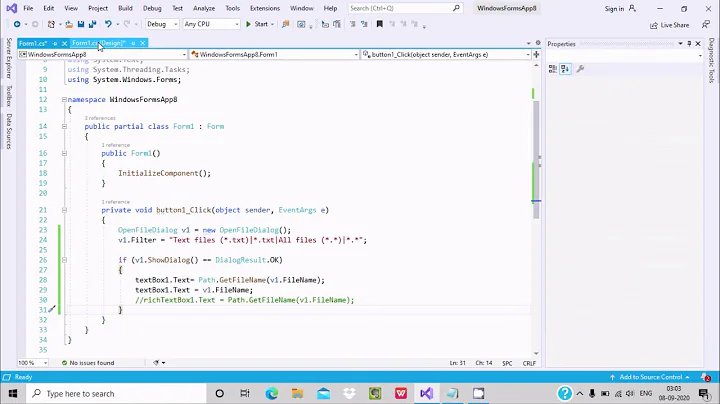What is the best way to combine a path and a filename in C#/.NET?
Solution 1
If you want "bad" filenames to generate an error:
if (Path.GetFileName(fileName) != fileName)
{
throw new Exception("'fileName' is invalid!");
}
string combined = Path.Combine(dir, fileName);
Or, if you just want to silently correct "bad" filenames without throwing an exception:
string combined = Path.Combine(dir, Path.GetFileName(fileName));
Solution 2
You could use:
Path.Combine(folder, Path.GetFileName(fileName))
or, to skip out the \ (not tested, maybe the Path.GetFileName handles this automatically)
Path.Combine(folder, Path.GetFileName(fileName.Replace("/","\\")))
Solution 3
Be aware that when you use Path.Combine(arg1, arg2) - if your user inputs a fully-qualified file path for arg2 it will disregard arg1, and use arg2 as the path.
In my opinion, Microsoft screwed up there! This can leave you wide open with the user hacking your entire filesystem. Be warned, read the fine print! If you're combining paths use: var newPath = path1 + @"\" + path2; simpler and no unexpected results...
Related videos on Youtube
Comments
-
 Rasmus Faber almost 4 years
Rasmus Faber almost 4 yearsWhat is the best way to combine a path with a filename?
That is, given
c:\fooandbar.txt, I wantc:\foo\bar.txt.Given
c:\fooand..\bar.txt, I want either an error orc:\foo\bar.txt(so I cannot usePath.Combine()directly). Similarly forc:\fooandbar/baz.txt, I want an error orc:\foo\baz.txt(notc:\foo\bar\baz.txt).I realize, I could check that the filename does not contain '\' or '/', but is that enough? If not, what is the correct check?
-
 Rasmus Faber almost 15 yearsThanks! Just FYI: the Replace is not necessary.
Rasmus Faber almost 15 yearsThanks! Just FYI: the Replace is not necessary. -
Robert Gowland over 11 yearsFor those less familiar with the framework, you need a
using System.IO;call in your file to get access toPath. -
Aaron Blenkush about 11 yearsNote that
Path.Combinewill throw anArgumentNullExceptionif either of its arguments arenull. You can pass an empty string to either argument -
ConditionRacer almost 10 yearsNote: Path.Combine will normally add a separator between each path if needed. However, Path.Combine("C:", "file.txt"), returns "C:file.txt", which is not a valid path.
-
Raquel almost 9 yearsA full path on the right side being returned as the result of combining relative paths is a correct and valid result.
-
Cyassin almost 8 yearsRegardless on if its a correct and valid result, too many devs are missing the fact that if in their code arg1 is a folder path and arg2 is user input, an absolute path inputed arg2 will be the resulting output. Makes it too easy to open up to in my opinion the worst of web app hacks..code/shell injection...Check your input guys.
-
 jinzai over 6 yearsIn my opinion, any developer that thinks it is okay to allow a user to type paths in with no checking whatsoever -- deserves to be hacked. This is Day One stuff and Path.Combine is not designed to work the way you think it should -- it is a decent and robust way to avoid having to check for the terminal backslash, which is actually intended for internal use by your code, not as a front end to secure your files. The documentation for it is quite complete -- just read it.
jinzai over 6 yearsIn my opinion, any developer that thinks it is okay to allow a user to type paths in with no checking whatsoever -- deserves to be hacked. This is Day One stuff and Path.Combine is not designed to work the way you think it should -- it is a decent and robust way to avoid having to check for the terminal backslash, which is actually intended for internal use by your code, not as a front end to secure your files. The documentation for it is quite complete -- just read it. -
 Florian Winter over 2 yearsNote that this will still allow
Florian Winter over 2 yearsNote that this will still allowfileNameto be..and result in something likeC:\path\to\... Tested here: dotnetfiddle.net/DoeH8K. Depending on use case, you may also want to validate thatfileNameis a valid filename (and not a "special filename" like..and maybenul,con, ...).









